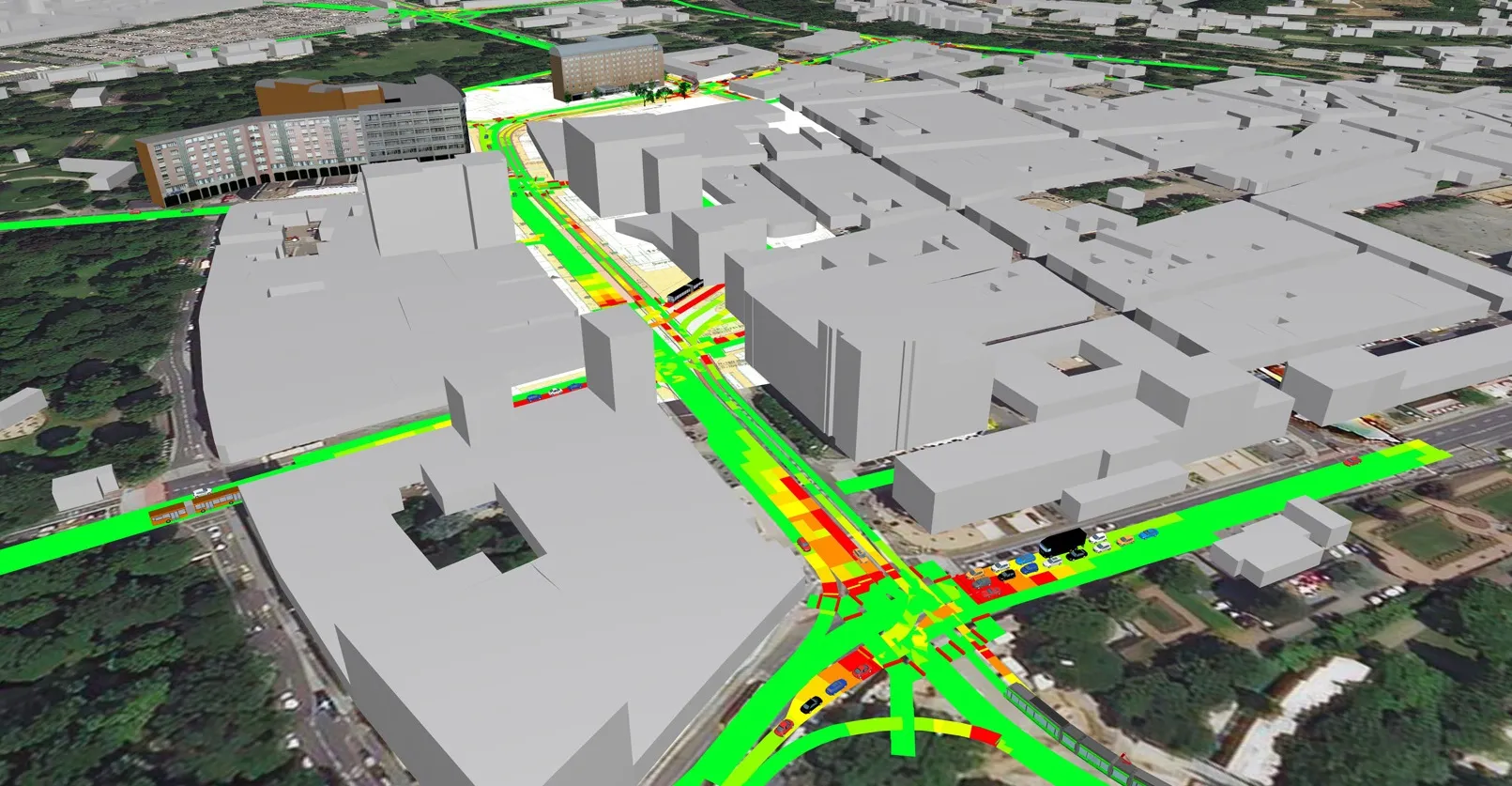Russian company Tolltec is currently implementing ITS technology to optimise the high traffic volumes on the 115km-long St. Petersburg's ring motorway that stretches around the whole city. As part of this project, PTV software, including the company's TrafficCountManagement and VISSIM, is part of the ITS technology used for St. Petersburg's ring road.
April 25, 2012
Read time: 2 mins
RSSRussian company 135 Tolltec is currently implementing ITS technology to optimise the high traffic volumes on the 115km-long St. Petersburg's ring motorway that stretches around the whole city. As part of this project, 3264 PTV software, including the company's TrafficCountManagement and 3989 Vissim, is part of the ITS technology used for St. Petersburg's ring road.
TrafficCountManagement is a system for database-assisted and extensively automated storage and analysis of traffic count data. With VISSIM, a module of the transportation planning software PTV Vision, users can create traffic simulations. "PTV technology allows Tolltec to monitor and analyse the traffic flow, and to use this knowledge for their transportation model - the best way of optimising the traffic flow on the ring motorway in the long term," explains Dr. Gerhard Ploss, sales director, traffic software at PTV Germany.
According to a study conducted by Germany Trade & Invest, the foreign trade and inward investment agency of the Federal Republic of Germany, about 70 per cent of Russia's federal motorways cannot cope with the increasing traffic volume. And the number of vehicles keeps growing rapidly. As a result, the Russian Federation is currently investing heavily in infrastructure development. "This development makes Russia's market also attractive for PTV and we want to be actively involved in this market on a long-term basis," says Ploss, who adds that the St. Petersburg ring road project can be seen as the starting point for further projects in Russia that will be carried out with the company’s products. "The chances are high that our software will also have a role to play in transportation planning for the 2014 Sochi Winter Olympics," announces Ploss.
To make PTV's product portfolio more widely known in Russia, the Germany-headquartered company attended the ITS Congress Russia in St. Petersburg that ended yesterday. Together with its Russian sales partner A + S Consult from St. Petersburg the company presented its transportation planning software PTV Vision, PTV TrafficCountManagement, Services for Floating Car Data as well as solutions for traffic & transportation portals on the Internet.
TrafficCountManagement is a system for database-assisted and extensively automated storage and analysis of traffic count data. With VISSIM, a module of the transportation planning software PTV Vision, users can create traffic simulations. "PTV technology allows Tolltec to monitor and analyse the traffic flow, and to use this knowledge for their transportation model - the best way of optimising the traffic flow on the ring motorway in the long term," explains Dr. Gerhard Ploss, sales director, traffic software at PTV Germany.
According to a study conducted by Germany Trade & Invest, the foreign trade and inward investment agency of the Federal Republic of Germany, about 70 per cent of Russia's federal motorways cannot cope with the increasing traffic volume. And the number of vehicles keeps growing rapidly. As a result, the Russian Federation is currently investing heavily in infrastructure development. "This development makes Russia's market also attractive for PTV and we want to be actively involved in this market on a long-term basis," says Ploss, who adds that the St. Petersburg ring road project can be seen as the starting point for further projects in Russia that will be carried out with the company’s products. "The chances are high that our software will also have a role to play in transportation planning for the 2014 Sochi Winter Olympics," announces Ploss.
To make PTV's product portfolio more widely known in Russia, the Germany-headquartered company attended the ITS Congress Russia in St. Petersburg that ended yesterday. Together with its Russian sales partner A + S Consult from St. Petersburg the company presented its transportation planning software PTV Vision, PTV TrafficCountManagement, Services for Floating Car Data as well as solutions for traffic & transportation portals on the Internet.









